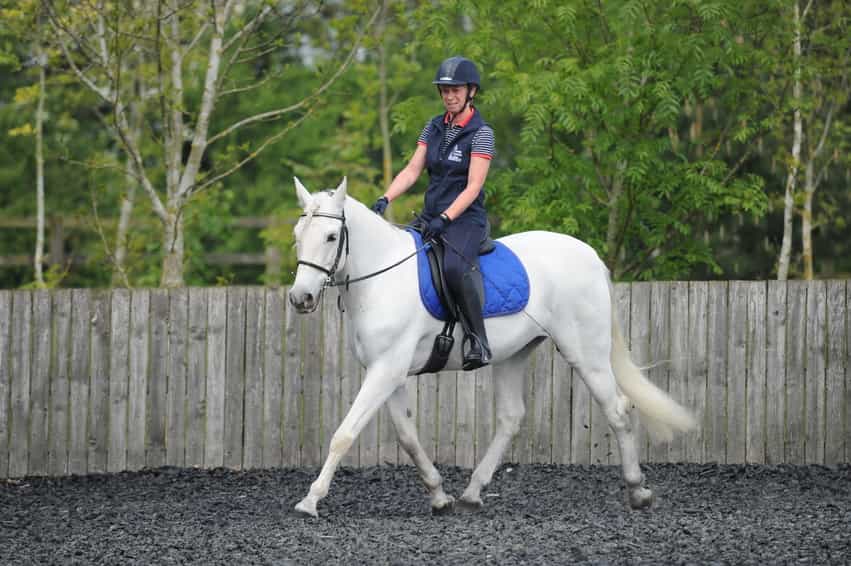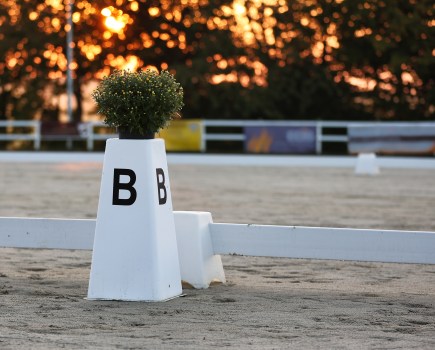Your horse’s balance is one of the most important developments in your horse’s training. Here’s Andrew Gould to explain how to get it right.
If your horse has trouble staying straight down the centre line, or falls out on circles, try these simple exercises.
To improve balance, it’s essential that you teach your horse to carry less of his weight on his forehand by transferring it to his hindquarters, which will lighten him in front and make him more supple.
It’s important that your horse is warmed up correctly and cooled down properly after this workout to avoid injury or strain.
15 minutes: Test your horse’s balance with transitions
The easiest and most effective way to train your horse to find his balance is through transitions, which will increase his suppleness and engagement from behind.
What’s also great about this exercise is that you can work on transitions, whether you ride in an arena, on grass or out on a hack.
A walk-to-halt transition might seem very basic, but it’s how I start all my young horses as it’s the first step to gaining control of your horse without using strong aids.
When asking for the halt, push your weight down through your feet onto the stirrup tread, asking your horse to wait, while at the same time applying slight pressure through the reins.
As soon as your horse understands the reins and accepts this transition, try asking him for an upward transition to trot using a definite leg aid.
Once he’s responsive and listening to you and working from behind in the trot, ask for a downward transition to walk or halt depending on your horse’s natural balance.
If he already has an understanding of balance, the transition from trot to walk will be sufficient. If he struggles, then trot to halt would be more beneficial.
Also start to include a few canter-trot-canter transitions, which are very good for helping your horse to maintain his balance and strength in all his paces.
Try to do as many transitions as possible throughout the 15 minutes, but also use them when your horse loses balance during the rest of your training session.
15 minutes: Supple him with shoulder-in
To keep your horse in balance, he needs to be supple. Should-in on the diagonal is my favourite exercise to improve this.
This lateral exercise on three tracks will allow you to get a good connection through the reins and allow you to push your horse through your body so that he’s riding from behind, creating true suppleness.
Try this:
Step 1: Pick up a forward-thinking trot, making sure your horse has a good rhythm and is listening to your aids.
If your horse hasn’t tried shoulder-in, first try the exercise in walk, although some horses prefer doing the exercise in trot.
Step 2: Ride onto a long diagonal, making sure your horse is straight and between your leg and hand, before you ask for shoulder-in.
If you’re on the left rein as you turn, you should ride shoulder-in to the right and vice-versa if you’re doing the exercise on the opposite rein.
Step 3: If you’re on the left rein, place your right leg on the girth, asking your horse to subtly bend around it, while your left leg prevents his quarters swinging out.
Your right rein should help with his flexion to the inside and your outside rein should define the bend and contain his energy.
Step 4: If your horse loses his shoulder or falls out, try using more outside rein to correct the bend.
If it’s due to him losing balance, then use a transition straight away to re-balance him, and then carry on.
Once your horse is in balance, he’ll feel forward and genuinely simple to control and easy to communicate with.
A horse in balance is a happy athlete as his body is in the right place and it’s far easier for his rider to give him effective aids.









